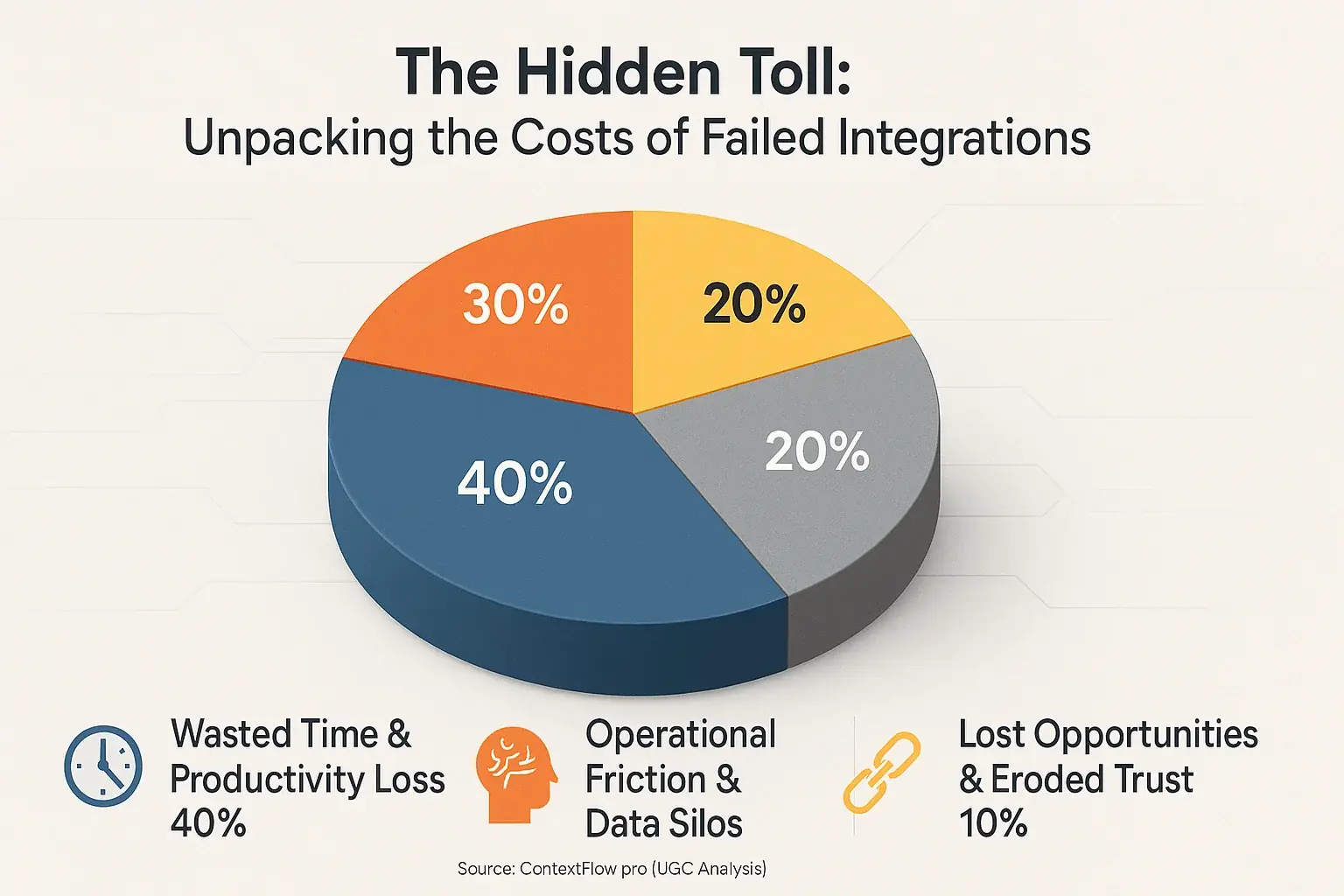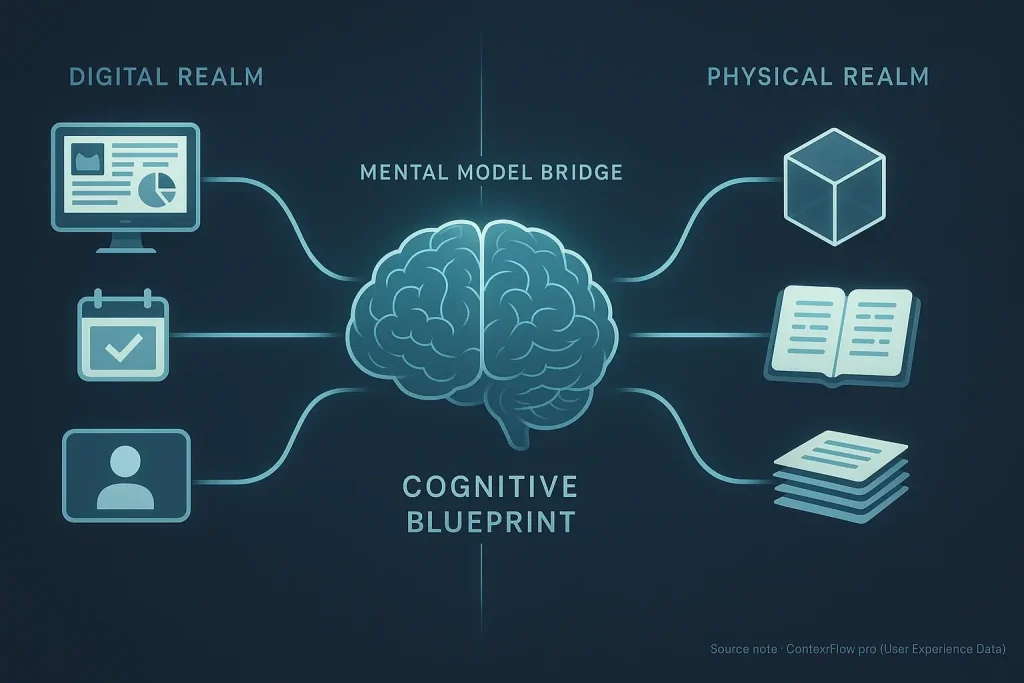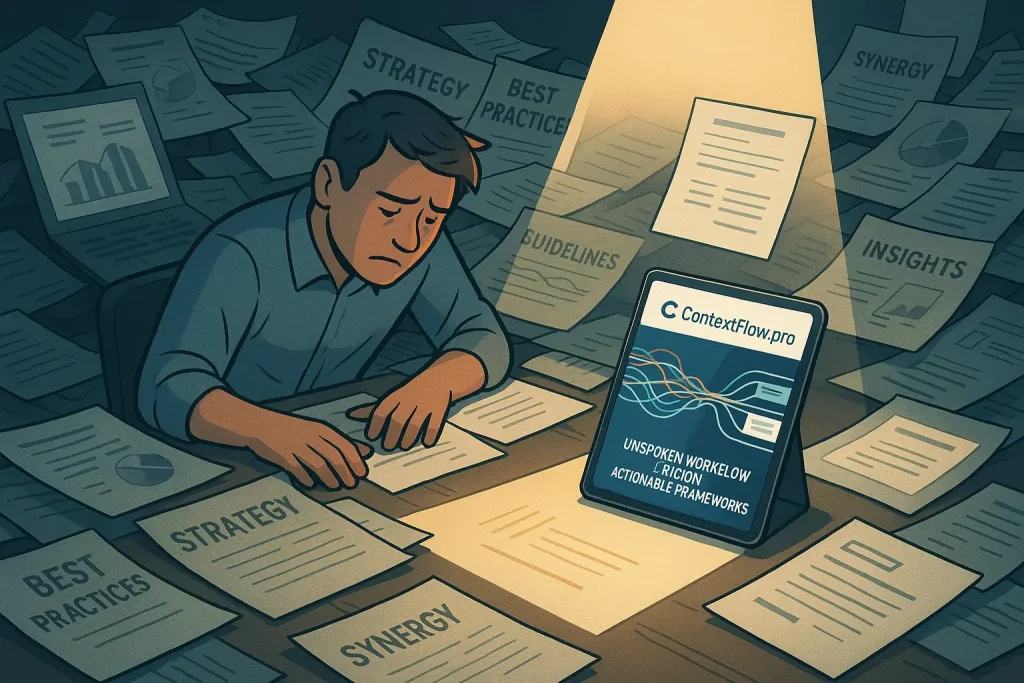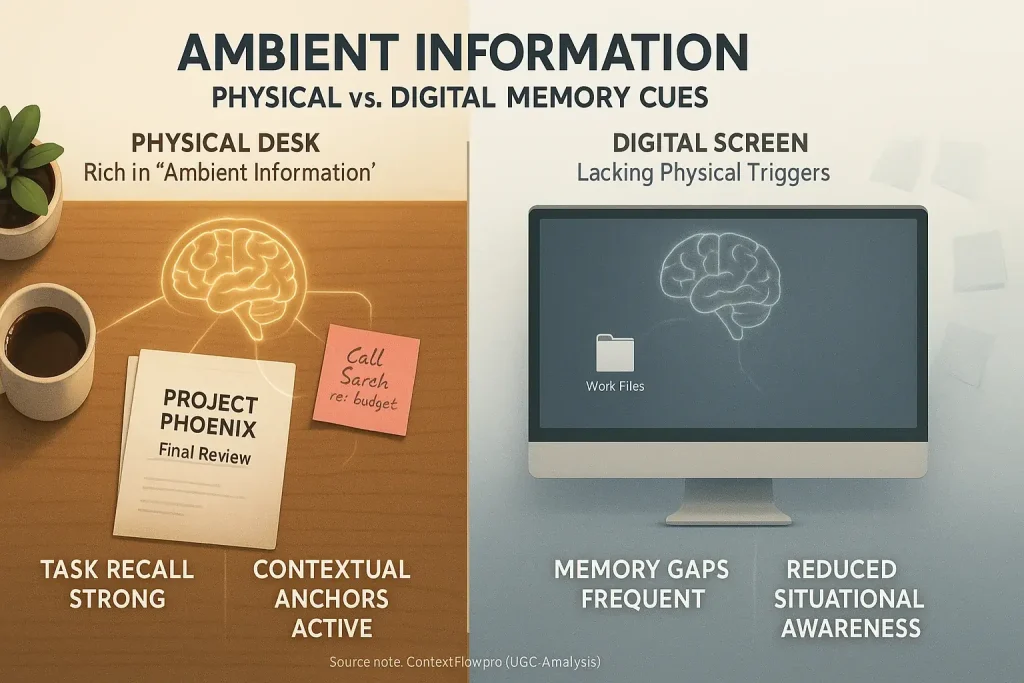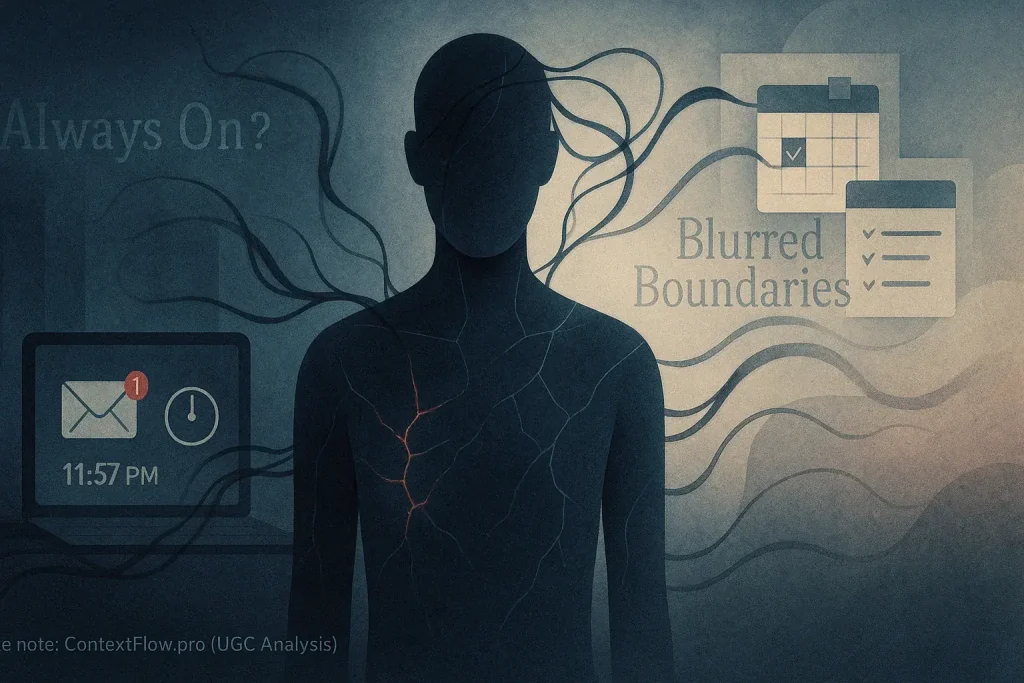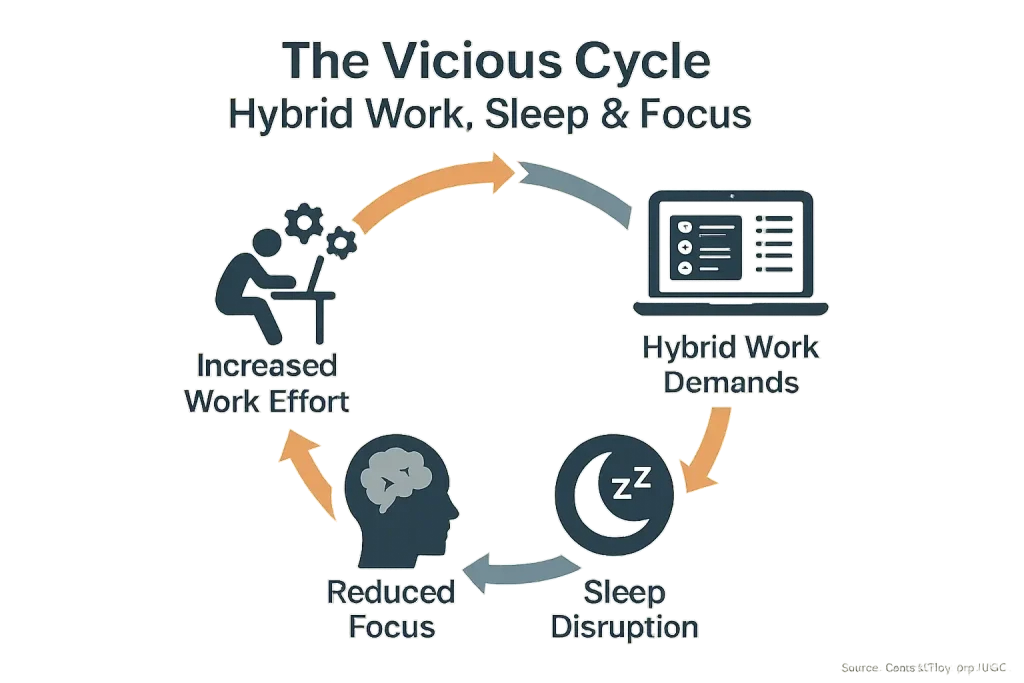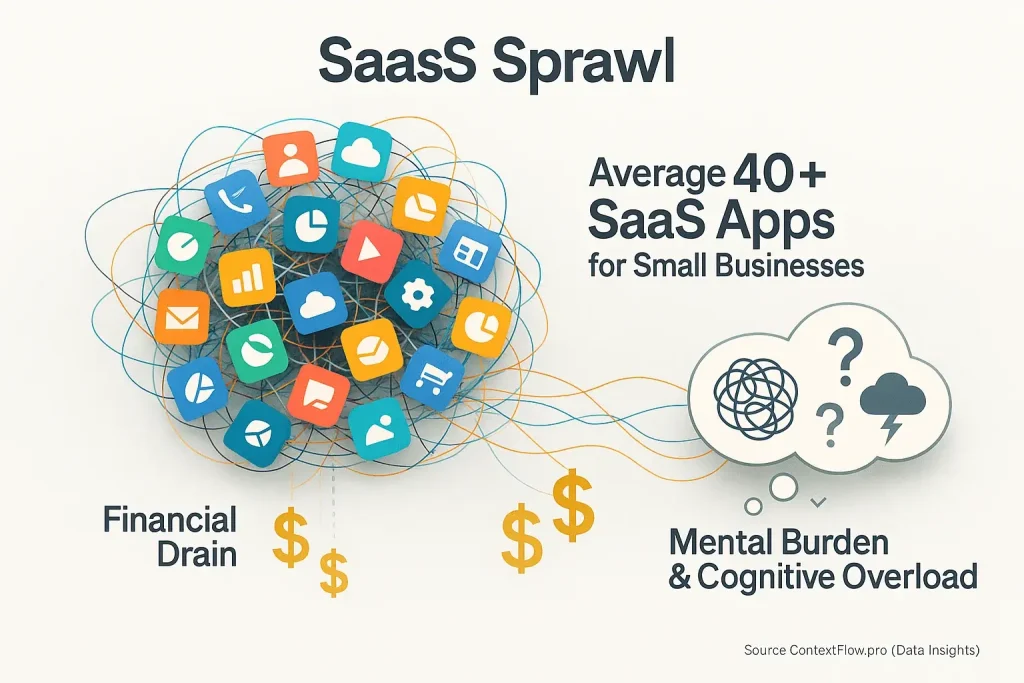The Promise vs. The Pain: When 'Seamless Integration' Becomes a Nightmare
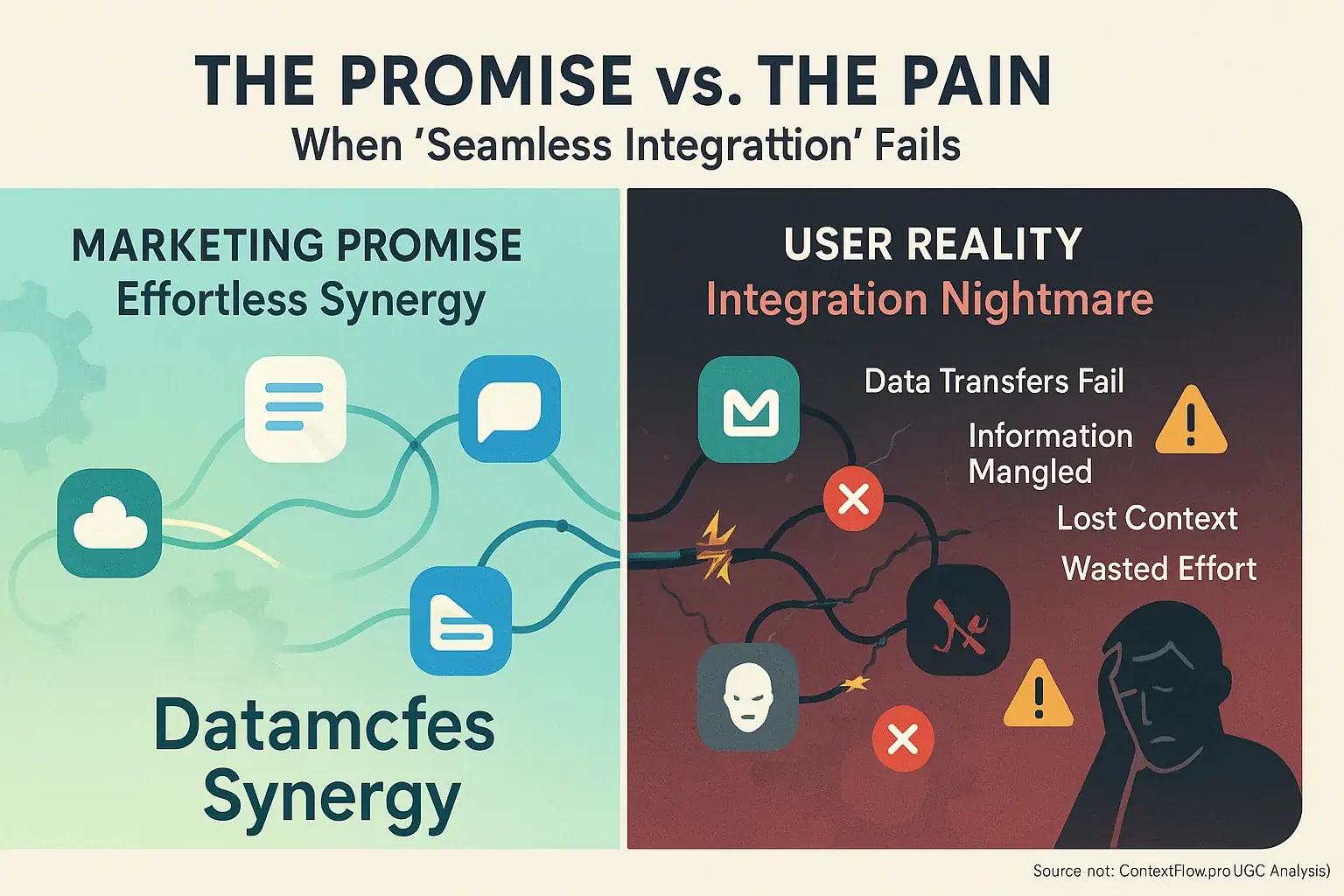
Hybrid work tools constantly advertise seamless integration. Sounds perfect. Ever believed that 'seamless' promise for your workflow? The reality for many users is starkly different, often painful. ContextFlow.pro uncovers this widespread user experience.
Marketing brochures depict tools hand-in-hand. The user experience? Often a silent, frustrating standoff. Apps simply refuse to talk to each other. Picture this: You spend precious hours configuring two platforms, expecting synergy. Instead, data transfers fail, or information gets mangled. Countless user accounts detail this exact digital nightmare. This failure breeds lost context and significant wasted effort.
ContextFlow.pro investigates precisely why these integration failures occur. We look past the marketing gloss. Our focus is the documented reality from user communities. This analysis helps you identify deceptive integration claims. Spot these false promises before they disrupt your productivity.
Broken Syncs & Data Discrepancies: The Silent Saboteurs of Your Workflow
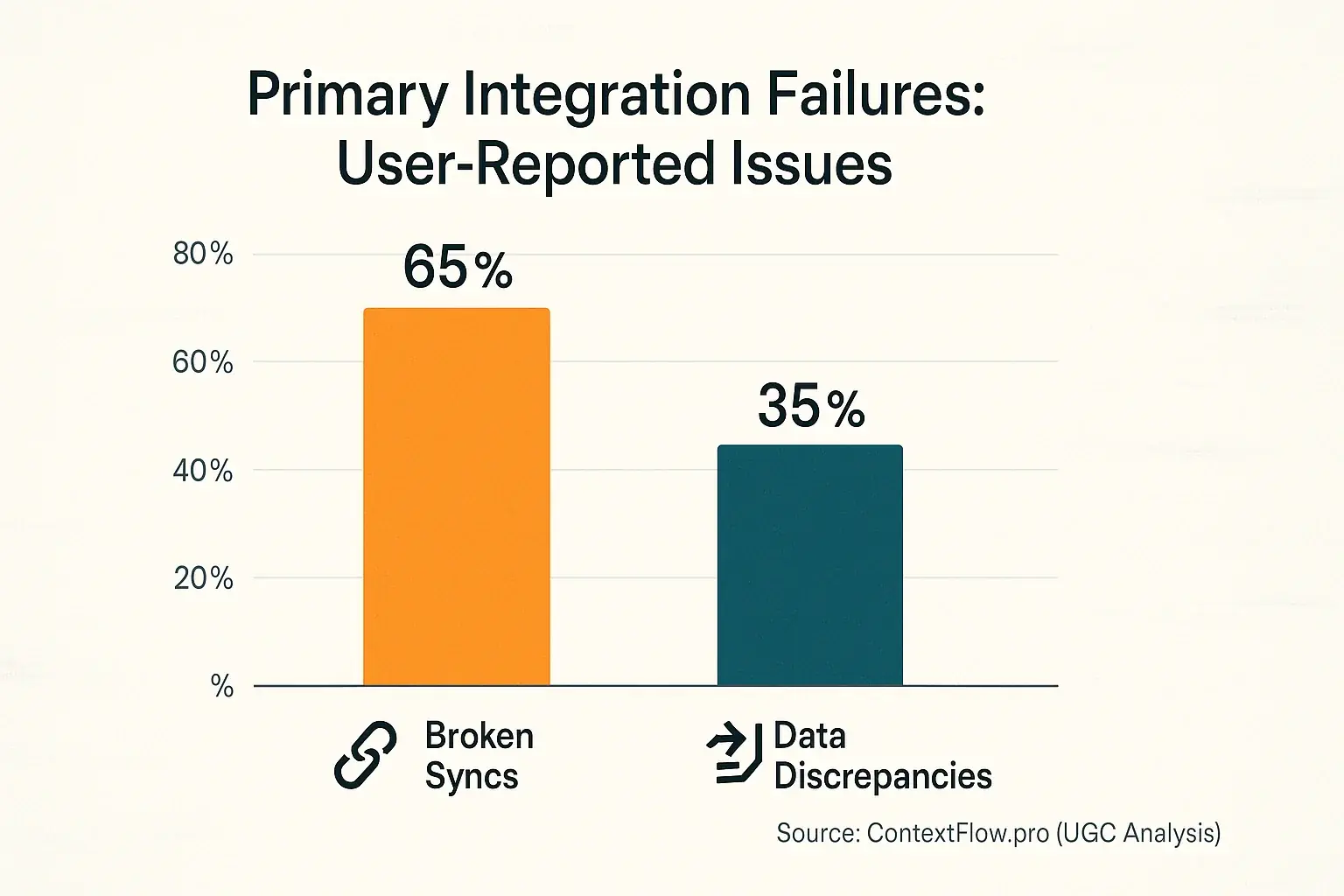
Broken synchronizations create insidious problems for hybrid workflows. You update a critical task in Application A. You expect this change to reflect seamlessly in Application B. It fails. Or worse, the data appears corrupted, sowing confusion. This silent sabotage forces constant, manual verification by users. User trust in their digital toolkit erodes quickly under such conditions.
Data discrepancies across applications present another major challenge. Imagine a client's vital contact details. They differ between your central CRM and your primary communication platform. That discrepancy is a clear recipe for awkward professional errors and lost opportunities. Users report substantial time lost attempting to reconcile these conflicts. Critical data integrity issues often surface only after negative consequences occur, a common frustration voiced in feedback.
Each manual correction of a synchronization error directly impacts your workflow. Verifying inconsistent data pulls you from substantive, focused tasks. That is a context switch. Such interruptions steal precious focus. They drain mental energy, increasing cognitive load substantially as you mentally rebuild your prior context.
Here is an unspoken truth our UGC analysis consistently reveals. Many users report even 'official' vendor integrations can be surprisingly unreliable. This unreliability often emerges unexpectedly, particularly after software updates to one of the connected systems. The root problem is not always user configuration or error. Sometimes, the integration itself represents the workflow's most fragile, weakest point.
The Setup Hell: When 'Seamless' Means Endless Configuration

That "seamless integration" often hides a labyrinth. Setup steps multiply, baffling users. Obscure settings and cryptic error messages create roadblocks. Initial user optimism quickly turns. Despair about the integration process frequently replaces it.
Many users describe spending hours, sometimes days. They try to make two tools communicate effectively. They sift through outdated help documents or wait for slow support responses. Precious work time vanishes. This troubleshooting drains their mental energy before any real work starts.
This setup battle costs more than wasted hours. It creates significant cognitive load. The sheer frustration mounts steadily. Momentum dies before you even begin using the "integrated" workflow. Such initial complexity deters many users. They ultimately abandon potentially useful tools due to setup hurdles.
Here is a truth our analysis of user experiences uncovers. Some vendors engineer complex integrations intentionally. This design can foster ecosystem lock-in, a clear user pain point. Other vendors simply prioritize feature lists over genuine user-friendly connectivity. It becomes a silent barrier to productivity for individuals and teams.
The Hidden Toll: Beyond the Financial Cost of Failed Integrations
User Workarounds: Surviving the Integration Nightmare (Tips from the Trenches)

When integrations inevitably stumble, users do not just surrender. They adapt. Professionals discover ingenious workarounds, keeping their hybrid workflows functional. These are tips from the trenches, hard-won wisdom for navigating integration gaps effectively.
Our analysis of user experiences reveals common strategies. Many individuals rely on robust personal checklists. Others maintain dedicated 'master' spreadsheets, tracking critical data manually. Teams often establish strict 'single source of truth' rules for vital information. This approach persists even if it means occasional data re-entry. Users find ways.
These methods are not ideal. They highlight incredible user resilience. This ingenuity in the face of technological shortcomings is remarkable. These are practical survival tactics. They are not, however, sustainable long-term solutions to systemic integration failures.
A practical moment: some users report success creating simple, internal 'integration protocols' for their team. It becomes a low-tech agreement. This pact defines how information moves between tools, even if the tools themselves lack automation. This approach reduces confusion. It lessens daily friction considerably.
The Path Forward: Demanding True Integration, Not Just Promises
The era of 'integration promises' without real-world delivery must end. Hybrid workers need tools. These tools must genuinely talk to each other. This connection reduces friction. It restores context flow. Current failures impose significant costs on users and organizations, impacting productivity and morale.
We must demand true interoperability. This is not just about adding more features. Tools must respect your data. They need to maintain context across platforms. They should truly support your hybrid workflow. Critically, they must not create new data silos. The unspoken truth? Our analysis of user experiences confirms the burden of 'integration' often falls squarely on the user. It is time for vendors to acknowledge this. They need to step up.
Understanding these integration nightmares is the first step towards solutions. Next, explore the pervasive problem of data silos. Your information gets trapped between disconnected tools within these silos. This occurs even when integrations are supposed to be working. This exploration helps identify data fragmentation's root causes, empowering you to seek better solutions.

